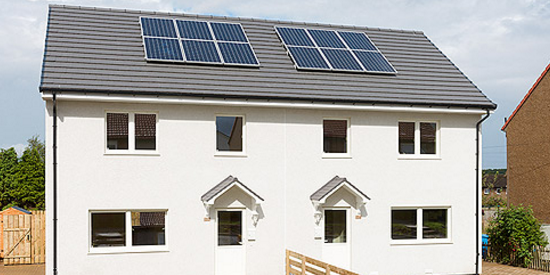Podcast: Play in new window | Download | Embed

Beattie Passive is a complete system for high performance homes. I love the concept of ‘a house as a system’. I also love the idea of making it simple and easy to get right, and that’s exactly what Ron Beattie has done.
As explained in their technical information, “The Beattie Passive system achieves superior levels of energy efficiency compared with both traditional and existing new methods of construction”.
Continuous Insulation
One of the main challenges to building a really energy efficient house, is getting a complete layer of insulation around the whole thing. Flat surfaces like the middle of a wall or a ceiling are easy, but it’s the joints and junctions that are hard to get right. This is where most building methods end up with thermal bridges and an incomplete envelope.
The Beattie Passive system for high performance homes overcomes this challenge by forming a continuous void, into which insulation is injected.
High Performance Homes
The Beattie team have chosen Passive House as the measure of high performance. This mean airtightness, high levels of insulation and good ventilation are incorporated into their buildings.
[sponsor_level category=”Gold” orderby=”DESC” columns=”1″ image=”yes” title=”no” link=”yes” bio=”no” show=“1”]
Affordable Housing
Such a high level of performance must come at a cost, right? Certainly there is sure to be some premium if you compare such a high performance house with a stock standard one. But that’s not comparing apples to apples.
Due to the many benefits of the system, including the relatively simple structural elements that can be pre-fabricated, Beattie Passive homes have been used across the UK by a number of Housing Associations for affordable housing.

Retrofit
I’m also intrigued about the use of the Beattie Passive system for retrofitting. Could this be utilised here where the performance of our homes is so poor?
Check out the Beattie Passive projects website for more information and inspiration.

Leave a Reply